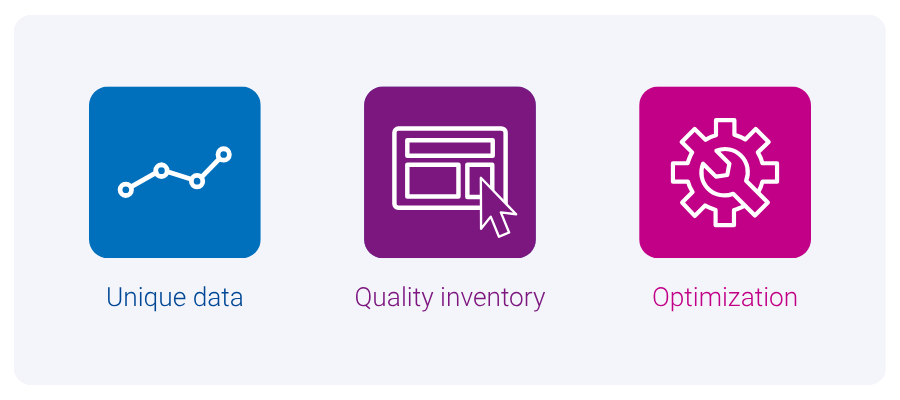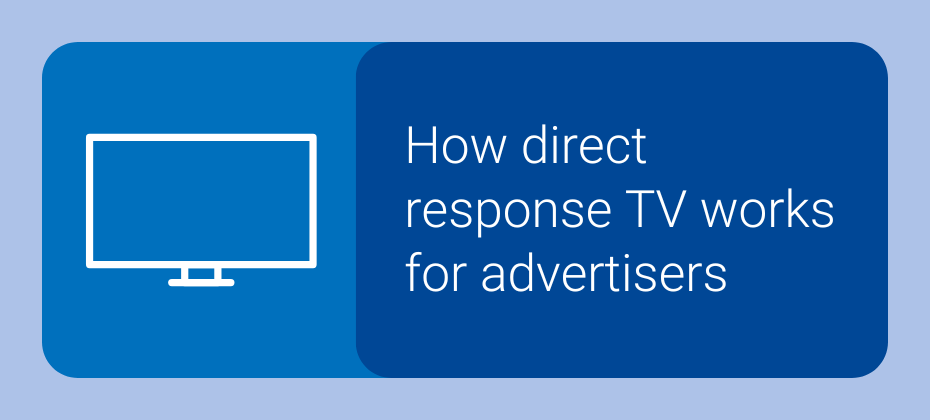At A Glance
Curation is changing how media is bought and sold, moving beyond open auctions and static site lists to more efficient deals. By combining unique data, real-time supply connections, and continuous optimization, curated PMPs reduce waste and improve results. Audigent's, a part of Experian, solutions help marketers achieve measurable outcomes with curated strategies that deliver better targeting, higher engagement, and improved ROI.If you buy media today, you’re already feeling the shift: the best results don’t always come from broad, open auctions or static “safe site” lists; they’re coming from deals that combine the right data with the right inventory and let algorithms optimize in real time. That’s curation. And when it’s done right, it reduces data and media waste for buyers and raises eCPMs (effective cost per thousand impressions) and win rates for publishers.

As part of our Cannes Content Studio series, leaders from Butler/Till, Index Exchange, OpenX, PubMatic, and Yieldmo discuss how curation cuts waste and lifts results.
What is real curation?
Real curation isn’t “packaging inventory.” It’s a strategic framework built on three pillars:
Why it matters: Manual approaches hit a ceiling. They can’t react quickly to shifting content, identity signals, or auction dynamics. That’s where technology partners come in, keeping the optimization loop running continuously.
Intelligence at every touchpoint
Curation isn’t about shifting control between platforms. It’s about better brand decisions, connecting opportunity-rich supply to the brand’s preferred buying platform and enriching each buy with audience data.In practice, supply-side platforms (SSPs) are ingesting richer signals to route inventory more effectively and support frequency caps and deal prioritization, in collaboration with demand-side platforms (DSPs).
“I think we’re seeing a shift toward bringing more DSP capabilities into the SSP, like supply-side targeting and data driven curation. Advancements in areas like CTV are enabling targeting based on content signals, and SSPs are pulling in more data to inform which supply is sent to the DSP, helping with things like frequency caps.”
OpenXMatt Sattel
Why page-level targeting beats static lists
Static domain lists were a useful first step for quality control. The intent was sound, but the approach was too cumbersome for today’s signal-rich buying. Today, AI and contextual engines read the page, not just the site, and adapt in real time.

Page-level logic delivers three key benefits:
- Accuracy by targeting high-intent, page-level content.
- Relevance by matching the creative to both the content and the audience context.
- Speed by enabling campaigns to move away from underperforming pages in real time, without waiting for a manual trafficking change.
“AI-driven contextual engines evaluate the page, not just the domain, to curate inventory in real time. That moves curation from static allowlists to adaptive logic for greater accuracy, relevance, and speed.”
YieldmoSophia Su
Partnerships broaden who influences the buy

Curation works when publishers, agencies, data partners, and platforms share signals and KPIs.
- Horizontal curation (across multiple SSPs) assembles broader, higher-quality reach and resilience, ideal for scale and diversity of supply.
- Vertical curation (an SSP’s in-house product) provides deep controls within a single exchange, useful for specific inventory strategies.
- Creative and data now shape supply and demand: better creative decisioning, tested against richer signals, improves outcomes.
DSPs remain central for activation and pacing. But the sell-side’s growing intelligence means more accurate inventory routing and signal application before a bid ever fires.
“Curation will continue to evolve through deeper data partnerships and expanded use across publishers and agencies, with more sophisticated types of optimization. DSPs will remain critical to activation, even as sell-side decisioning plays a larger role in identifying and shaping the supply to select.”
Index ExchangeMike McNeeley
Curation delivers access and measurable performance

Here’s what curated deals are delivering.
For buyers
| Result | Type of result |
| 36-81% | savings on data segments |
| 10-70% | lower cost per click (CPCs) |
| 1.5-3x | higher click-through rates (CTRs) |
| 10-30% | higher video completion rates |
For publishers
| Result | Type of result |
| 20% | bid density |
| 118% | win rate |
| 10% | revenue on discovered inventory |
| 25% | eCRM on incremental impressions |
Why it works: When data, supply, and optimization are integrated, you reduce waste, surface better impressions, and let algorithms compound your advantage. That’s why curated private marketplaces (PMPs) have grown at ~19% compound annual growth rate (CAGR) since 2019.
“Publishers using supply-side curation see ~15% more diverse buyers and 20–25% better performance than buy-side-only targeting. Smarter packaging and signal application tighten auctions and strengthen outcomes.”
PubmaticHoward Luks
Holistic curation streamlines planning and outcomes

Curation adds the data layer earlier in the buying process, starting at the supply-side. This creates more opportunities to reach the right audience and improves scale and performance. By replacing multiple line items with a single curated deal, campaign setup becomes faster and less error-prone. Curated deals also simplify measurement by including the necessary context for accurate attribution, while dynamic adjustments ensure campaigns remain optimized without requiring manual updates.
“Publishers using supply-side curation see ~15% more diverse buyers and 20–25% better performance than buy-side-only targeting. Smarter packaging and signal application tighten auctions and strengthen outcomes.”
Butler/TillGina Whelehan
It’s much more streamlined, bringing more pieces together so we’re thoughtful and holistic. Adding the audience and data element creates more scale and strategy in how we curate supply and data, and ultimately better results for clients.
The bottom line
Curation has matured from buzzword to performance system. DSPs still anchor activation and pacing, but better sell-side pipes now pre-route inventory and apply signals before any bid starts, making the whole system faster and more accurate. When you combine unique signals, tight supply connections, and always-on optimization, you gain addressability, reduce waste, and achieve better business outcomes for both buyers and sellers.
Curation isn’t just a trend; it’s where programmatic advertising is headed. Start testing curated PMPs today to see the difference for yourself.
Explore curated PMPs with Audigent
Curation FAQs
Curation in performance marketing is the process of combining data, inventory, and optimization to deliver better results. Audigent supports curated strategies through privacy-safe data and advanced integrations.
Curation reduces wasted spend by targeting high-quality impressions and optimizing campaigns in real time. Audigent’s solutions help marketers achieve higher click-through rates, lower costs, and better engagement across channels.
Curated PMPs are deals that use curated data and inventory to deliver measurable results. They help buyers save on data costs, improve ad performance, and achieve better video completion rates, while publishers see higher win rates and revenue.
Audigent provides unique data assets, privacy-safe integrations, and optimization tools that help marketers and publishers create curated deals. Our solutions ensure campaigns are more efficient, targeted, and effective from start to finish.
Horizontal curation combines inventory across multiple platforms for broader reach and diversity, while vertical curation focuses on deep control within a single platform. Both approaches can be tailored to specific campaign goals with Audigent’s expertise.
Latest posts

Swiss Sense’s mission is to provide exceptional sleep comfort for all. The European retailer analyzed their customer data in one market to better understand their ideal customer profile and scale these learnings to other markets. To achieve this, Swiss Sense used Experian’s Mosaic® data, a profiling tool that segments households into categories based on their lifestyle, interests, and demographics. Using Mosaic data, Swiss Sense identified key customer personas and tailored their communications to match. Partnering with Experian, they created personalized product recommendations and delivered targeted messaging through direct mail, out-of-home (OOH) advertising, and leafleting campaigns. What is Mosiac? Experian’s Mosaic data helps businesses understand their customers better by grouping households into segments based on their lifestyles, interests, and financial situations. It gives marketers a clear picture of who their customers are, so they can create more targeted campaigns. Challenge: Utilize data-driven insights to drive market-specific growth strategies Swiss Sense wanted to expand its presence across all of its markets. To achieve this, they analyzed customer data in the Netherlands to identify their ideal customer profiles and replicate their success in other regions. Their objectives included: Develop regional strategies Integrate data-driven insights into their local and international marketing strategy The solution to achieve data-driven marketing Swiss Sense saw that Experian could provide a data-driven view of customers in other countries using both Global and local Mosaic profiles. They chose Experian as their partner to ensure a persona-based segmentation across multiple countries. This partnership allowed Swiss Sense to: Gain consistent customer insights across all operational markets. Equip marketing and operational teams with precise data for targeting and personalization. Drive adoption of the segmentation strategy by giving end users access to a bespoke dashboard with the data. Results: Driving targeted marketing and personalized experiences with Mosiac By partnering with Experian, Swiss Sense was able to seamlessly implement a solution tailored to their unique needs. Swiss Sense gained an overview of its customer base while using the more granular Mosaic data in each country to gain the optimal understanding of each region’s customers. These insights helped Swiss Sense’s marketing team, allowing them to craft targeted customer content, suggest relevant imagery, and adopt the right tone of voice. Identifying key Mosaic growth segments further enabled Swiss Sense to focus marketing efforts on regions and cities over-indexing for their ideal customer types. This led to the execution of highly targeted offline campaigns, including: Direct mail flyers delivered to target audiences’ homes OOH advertising in cities where key segments over-index Distributing leaflets in public places such as target town centers Download our case study for the full details of Swiss Sense’s journey to international growth. Download the full case study now Contact us About Swiss Sense Founded by the Diks family in 2006, Swiss Sense is a Dutch family-owned retailer specializing in high-quality beds, mattresses, and bedroom accessories. With over 2,000 employees and stores across multiple European countries, Swiss Sense is dedicated to providing exceptional sleep comfort for all. To learn more, please visit www.SwissSense.nl. Latest posts

Every year, the Experian team attends the Consumer Electronics Show (CES) in Las Vegas to study the latest technological advancements and innovations that shape the AdTech industry. The energy at CES 2025 was palpable, with a whirlwind of conversations around artificial intelligence (AI), connected TV (CTV), privacy-first solutions, and sustainability in advertising. Here are four standout themes from this year’s event. 1. The AI evolution: More buzzwords, but growing potential AI dominated discussions this year, but the gap between hype and practical application was still evident. While some vendors showcased innovative tools for campaign optimization and audience creation, much of the buzz felt aspirational. The use of AI to generate audiences based on new types of data is a promising sign of things to come. Data providers, including those collaborating with Experian, are beginning to test AI tools to enhance audience accuracy and scale. The AI space still feels frenetic, but the potential for transformative change is undeniable. "AI was a hot topic, with discussions ranging from campaign optimization tools to audience selection. While many leaned on buzzwords, there were glimpses of legitimate use cases."Brooke Logan, VP of Data Strategy and Partnerships 2. CTV: A race for quality and curation CTV remained a popular topic at CES, particularly around the challenges of fragmentation and scale. Sellers are grappling with an oversupply of inventory, leading to a renewed focus on curation. Conversations highlighted the importance of premium audiences, brand safety, and identity resolution. In the fragmented CTV landscape, advertisers want to be able to define an audience once, have that audience be highly addressable, and then activate everywhere. One standout theme was the shift in CTV monetization strategies. With linear TV revenues declining, major publishers are exploring ways to maximize yields on streaming platforms. Direct-sold premium inventory still reigns, but programmatic is gaining traction—a trend we’re seeing driven by publishers seeking scalable solutions. "CTV remains fragmented. While premium inventory is largely direct-sold, big publishers are exploring ways to boost yield on streaming as linear revenue declines."Lauren Portell, Sr. Account Executive, Advanced TV 3. Privacy-first solutions The regulatory landscape continues to evolve, and advertisers are responding with innovative, privacy-centric methodologies. For industries like healthcare, privacy-first solutions are being developed from the ground up to comply with current and future regulations. The emphasis on cookieless and contextual advertising remains strong, with data providers utilizing first-party data to enrich audience targeting strategies. "Providers across verticals that are typically more sensitive are developing methodologies from the ground up based on current and future potential privacy regulations."Adam Kobus, Director of Data Partnerships 4. Eco-conscious advertising: Building a sustainable future Sustainability emerged as a growing focus, as indicated by initiatives like Scope3 and Experian’s own carbon reduction goals. Companies are exploring ways to reduce the environmental impact of ad serving and data management. For example, platforms like AdGood are transforming unused CTV inventory into opportunities for non-profit initiatives. While not strictly eco-focused, these efforts signal a shift toward more conscientious advertising practices. "Sustainability is gaining attention, with efforts to reduce the carbon footprint through eco-conscious advertising, data management practices, and ad serving."Erin Wolf, Sr. Account Executive, Demand Partnerships The buzz around Experian The launch of the Experian marketplace and the Audigent acquisition were major talking points, underscoring Experian’s commitment to innovation in AdTech. Together, Experian and Audigent will be an end-to-end solution where publishers big and small can empower marketers to better understand their customers, create precise audience segments, and activate those audiences across the best inventory. Likewise, Experian’s new data marketplace connects TV operators, programmers, supply partners, and demand platforms with top-tier third-party audiences across retail, CPG, health, B2B, and location intelligence. All audiences delivered from our marketplace benefit from our best-in-class offline and digital identity graphs, which ensure addressability across all channels like display, mobile, and CTV. An exciting year ahead CES 2025 underscored the rapid evolution of the advertising ecosystem. From AI to CTV and privacy-first solutions, the industry is adapting to new challenges and opportunities. As Experian continues to lean into these trends, our role in powering data-driven advertising through connectivity remains more focused than ever. We’re excited to see how these themes will evolve throughout the year and look forward to collaborating with our partners to shape the future of digital advertising. Follow us on LinkedIn or sign up for our email newsletter for more informative content on the latest industry insights and data-driven marketing. Contact us Latest posts

Suppose you're watching your favorite TV show, and an ad suddenly catches your attention. It urges you to take immediate action, whether to call a number, visit a website, or text a keyword like ‘DETAILS’ to a specific number for more information. This is direct response television (DRTV), a powerful form of advertising available on all TV types — including live, cable, and streaming — that directly connects brands with consumers to drive immediate engagement and measurable results. The goal of DRTV marketing is simple: convert viewers into customers quickly and measurably by asking them to do something in real time. Every DRTV ad is carefully designed to drive quick conversions with a clear, direct path from interest to action. This makes it an essential tool for marketers who need to measure their return on investment (ROI) for TV and see instantaneous results. Key benefits of DRTV marketing Unlike traditional TV ads that build long-term brand awareness, DRTV campaigns are focused on driving instant results and are surprisingly effective at doing it. Here are a few benefits of DRTV and why it’s a powerful tool for marketers in a digitized world. Immediate customer engagement One of the biggest advantages of DRTV is its ability to engage customers right off the bat. DRTV grabs attention and motivates people to act now, whether with a phone number on the screen, a QR code to scan, or a limited-time offer, often with compelling incentives. Measurable ROI DRTV is designed to deliver precise, trackable results. Because the ads encourage specific actions — like visiting a website or calling a phone number — it’s easy to see what’s working and what’s not. Marketers can measure everything from sales to lead generation, which guides them in refining their strategies for even better results. Pairing DRTV with digital tools, like web analytics or CRM systems, can provide even deeper campaign performance insights. Broad reach Even in the streaming age, live TV and cable still attract millions of viewers, which makes DRTV excellent for brands needing to expand their reach. Marketers can even tailor DRTV ads to specific audiences by choosing the best time slots on the proper channels. Whether you’re targeting parents watching morning news or sports fans tuning into big games, you’ll know you’re connecting with the right people at optimal times. Types of DRTV ads DRTV advertising offers several formats, each suited to different audiences, budgets, and goals, whether you’re introducing a new product or driving traffic to your website. Infomercials Infomercials are the classic, long-form DRTV ads that most people associate with the term. These ads typically run for 15-30 minutes and go into detail on product benefits and features. They often include demonstrations and special offers to educate and engage viewers with urgent, limited-time deals. Think of the iconic “But wait, there’s more!” ads used to sell everyday items ranging from household cleaners to exercise equipment. Short-form ads Short-form DRTV ads are 30-second to 2-minute ads that get straight to the point with a single message or offer and a clear call-to-action (CTA) to encourage immediate engagement. Short-form ads are ideal for quick bursts of information, like promoting a flash sale or highlighting a new product. A 60-second ad showcasing a new mobile app might feature a quick walkthrough of its features, followed by a QR code or website URL to download it instantly. Product demos Some DRTV ads focus exclusively on demonstrating how a product works in real-life scenarios. These ads are great for showing off unique features or solving familiar pain points that make the product feel essential. A cookware brand might show how its nonstick pans make cooking and cleanup a breeze while including a CTA to “order now and get a free bonus spatula!” Testimonials Testimonials from real customers or experts are a great way to build trust and credibility. Hearing someone’s success story or endorsement of a product or service can help viewers feel confident about their purchase decision. A skincare brand, for example, might air a two-minute ad of a dermatologist explaining the science behind the product, along with five-star reviews from satisfied users. Call-in contests or limited-time offers This type of DRTV ad creates urgency by promoting a special offer or giveaway. Viewers might have to call a number or visit a website within a specific timeframe to claim the deal. For example, travel agencies sometimes air ads offering free vacations or planning kits to the first 100 callers, which helps them generate immediate leads. Hybrid ads with digital integration Many modern DRTV campaigns blend traditional TV with digital tools, like QR codes, social media hashtags, or links to custom landing pages. These hybrid ads meet viewers wherever they are. A fitness program might air a short-form ad with a QR code linking to their free app trial, making it easy for viewers to instantly engage. Success tips for DRTV advertising Creating a successful direct response TV campaign centers on messaging that resonates with the right audience, inspires action, and delivers measurable results. Here are some essential tips for a winning DRTV strategy. Strong CTA Every DRTV ad should include a compelling, straightforward CTA that motivates viewers to act immediately. Whatever it is, your CTA should be easy to understand and time-sensitive to create urgency, such as, “Claim this limited-time offer in the next 30 minutes!” Multi-channel integration Direct response TV works best when part of a broad multi-channel strategy, so you should make sure your campaign integrates well with digital channels. This can reinforce your message, help consumers engage across platforms, and drive better results. Audience targeting Precise audience targeting is critical to DRTV campaign success. Experian’s advanced TV audiences, developed with the Advertising Research Foundation (ARF), help you connect with the right viewers to drive immediate action. These syndicated audiences are now available on FreeWheel, the TV advertising industry’s global tech platform. With over 2,400 ready-to-use audience segments, Experian enables you to target specific groups, such as: TV viewership audiences: Target households based on viewing habits and preferred devices. In-market car buyers: Reach consumers actively searching for their next vehicle, which is ideal for driving sales. Holiday shoppers: Engage gift-givers, deal-seekers, and travelers during peak shopping seasons. New TV audiences released in August 2024 In addition to these, our August 2024 release introduced several updates that further refine Experian’s targeting capabilities. Some of the audience updates in this release included: New retail transaction audiences: These segments offer insights into categories like children’s products, parenting, hobbies and crafts, science and nature, and sports and fitness. With high spending and frequent purchase behaviors, these audiences provide a deeper understanding of consumer preferences. Notable segments include: Sports and fitness high spenders Children’s product high spenders Science and nature high spenders Updated TV audiences: New and refreshed TV segments now reflect the viewing habits of today’s consumers for accurate insights and targeting. Examples of newly added segments include: Free and paid ad-supported streaming TV subscribers Satellite service subscribers Cable and streaming TV service subscribers With these advanced targeting capabilities, your DRTV campaigns can be more effective and resonant with viewers most likely to respond for maximum ROI and engagement. Effective planning A strong DRTV campaign starts with defining your objectives, budgeting effectively, and identifying the right media mix. Understanding where your audience spends their time — prime-time TV or niche cable channels — will get you the most value from your DRTV investment. Real-time tracking Tracking your DRTV campaign’s performance in real time is critical for success. Tools that provide immediate insights into viewer responses, website visits, or call volumes allow you to identify what’s working and pivot quickly if needed. Measuring success Measuring success against key performance indicators (KPIs) like conversion rates, ROI, or cost-per-acquisition (CPA) is an excellent way to know if your DRTV campaign is delivering results. Experian’s advanced data solutions make tracking and analyzing campaign performance easier, so you can make data-informed decisions and deliver precise results to stakeholders. Continuous optimization DRTV marketing is an ongoing effort. Use the insights from real-time tracking and performance measurement to refine your strategy. Optimization keeps your campaign relevant and effective, whether you need to tweak your CTA, adjust your audience targeting, or test new creative formats. How DRTV relates to advanced TV and connected TV While DRTV has historically focused on immediate viewer actions via traditional linear TV, it’s found new relevance within advanced TV and connected TV (CTV) ecosystems. These modern formats expand the measurable, action-driven qualities of DRTV while incorporating the precise targeting and personalized storytelling made possible by digital technologies. DRTV and advanced TV Advanced TV enhances DRTV by enabling addressable advertising, which helps marketers deliver ads to specific households based on behavioral or demographic data. For instance, using tools like Experian’s Graph, advertisers can integrate data sets across multiple sources to refine audience segmentation and tailor messages to individual households. Advanced TV also supports cross-channel consistency to provide a unified customer experience whether the viewer engages with linear TV, streaming services, or other devices. Additionally, programmatic ad buying plays a role in automating the ad-buying process. This helps advertisers optimize their bids and placements and get DRTV campaigns in front of the right audience at the right time, which maximizes cost-efficiency across both traditional and digital channels. DRTV and CTV CTV has a high rate of logged-in, authenticated viewers and provides a lot of helpful first-party data. This allows for hyper-precise audience targeting, cross-device attribution, and an ability to link ad exposure to conversions — even when purchases occur on non-CTV devices. Universal IDs like UID2 further strengthen these capabilities by creating consistent and privacy-respecting user identities across platforms. Experian’s TV partnerships Through partnerships with leading CTV players like Madhive, Samsung, Disney/Hulu, and others, Experian’s identity solutions integrate seamlessly to support well-timed, personalized ads across major streaming platforms. These integrations, powered by our Digital and Offline Graphs, offer a complete view of audiences to enable more controlled, effective activation across mediums, including free ad-supported streaming television (FAST) channels. Using Experian’s advanced data and identity tools, advertisers can tap into the full potential of DRTV strategies within advanced TV and CTV to make campaigns more actionable, efficient, and impactful. The future of DRTV So, what is DRTV going to look like in the future? With the integration of digital and television platforms, DRTV is becoming more targeted, interactive, and personalized. This shift creates new opportunities for advertisers to drive conversions. Here are some key advancements that will continue to shape the future of DRTV: Addressable TV: Advertisers can deliver targeted ads to specific households based on demographic and behavioral data. It uses data from smart TVs, streaming devices, and third-party data providers to enable highly relevant ads based on the interests of individual viewers. Interactive TV ads: Interactive TV ads enable viewers to engage directly with the content through their remote control or mobile devices. Users can click on a product for more information or make purchases without leaving the TV screen and immediately convert. Authenticated audiences: With CTV and AI technology, advertisers can use first-party data from authenticated users to improve targeting, measurement, and campaign performance. Advertisers can create a more cohesive and personalized experience by linking viewers across multiple devices, which improves ad effectiveness and attribution. Branded apps with saved information: Branded apps that store payment and personal information streamline the direct response process. These apps reduce purchase journey friction and allow quicker conversions, as viewers can complete transactions with fewer steps. QR codes replacing URLs: QR codes are becoming a popular alternative to traditional URLs in DRTV ads. These codes provide a quick, convenient way for viewers to visit a website, access a product page, or act on a CTA simply by scanning the code with their phone. Better targeting algorithms: Advancements in targeting algorithms allow advertisers to serve more personalized and relevant ads. These algorithms help ads reach the right audience at the right time, which can increase engagement and conversion rates. These innovations offer advertisers more tools to connect with audiences in a personalized, interactive, and measurable way. Connect with Experian’s TV experts Experian can help you achieve the full potential of your direct response TV advertising efforts with our advanced tools, precise audience targeting, and strong industry partnerships. We help brands create impactful DRTV campaigns that drive real-time engagement, audience connection, and measurable results, whether for traditional, advanced, or CTV. Reach out today to work with us on your DRTV efforts and achieve better ROI, or explore how our expertise can transform your TV advertising campaigns. Connect with our TV experts Contact us Latest posts


